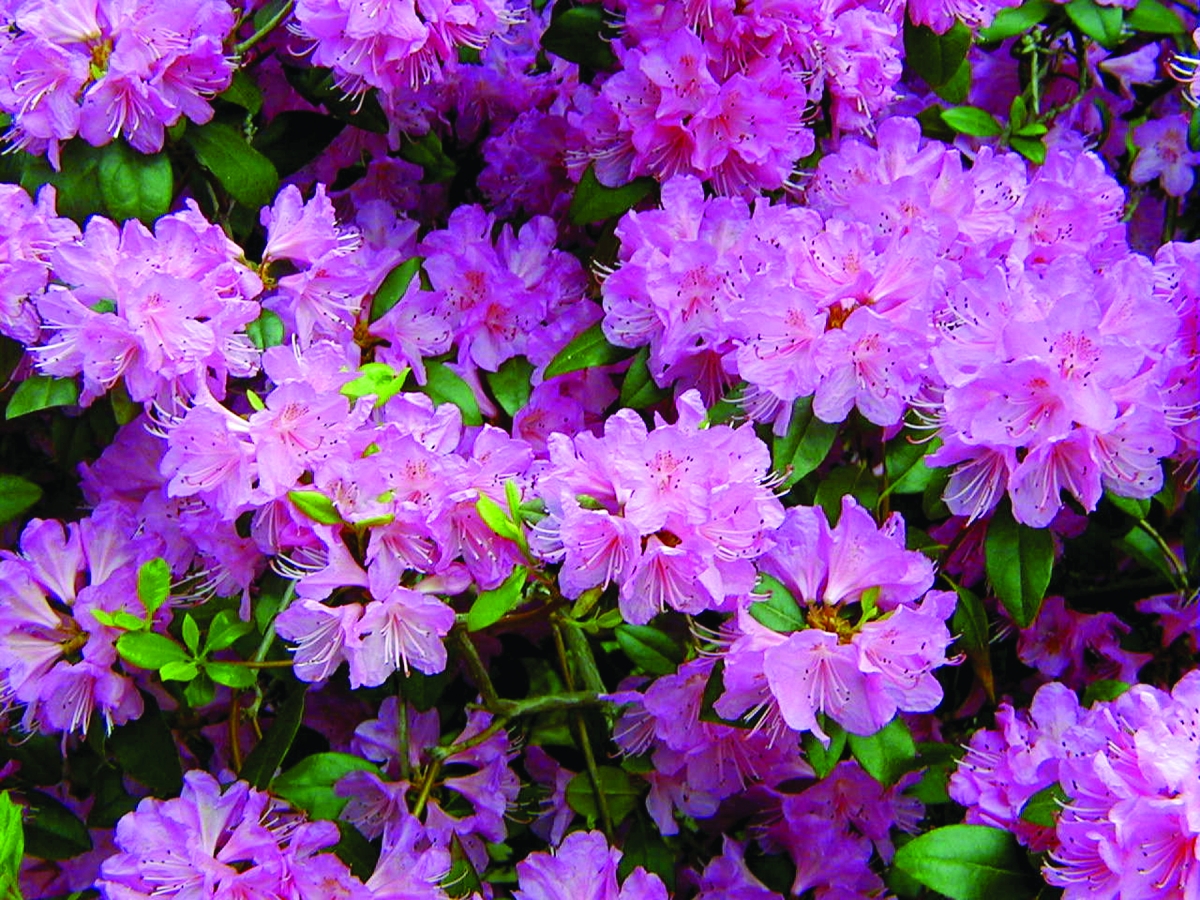
General Information and Care
Rhododendrons offer tremendous variety in color, shape and size–the result of centuries of hybridization, improving flower color, hardiness and bloom time. Weston Nurseries has been raising and introducing new varieties for some seventy-five years. Rhododendrons are easy care plants that will thrive for decades if simple requirements are met.
Soil and Moisture:
Rhododendrons prefer rich, humusy, acidic soil that drains well. Since they are shallow rooted, it is easy for them to dry out and, at the same time, drown if over-watered. Sandy or dry soil, as well as heavy clay, should be amended before planting by adding peat moss, peat humus or compost. Mulch helps retain moisture, control weeds, and cool the soil.
Sun:
Large-leaf Rhododendrons (Elepidotes) prefer partial shade and protection from harsh summer and winter sun as well as wind. Planting them in an eastern or northern exposure is preferable to western or southern. However, a southern exposure can work if it is shaded, the soil is rich, and the plant is protected from wind. Many tolerate deep shade, although they may become leggy and not flower as heavily. Flowers appear in mid to late May and some bloom as late as mid June. Small-leaf Rhododendrons (Lepidotes) prefer full sun and become leggy if planted in shade. They tolerate harsh sun and wind better than the Elepidotes and bloom earlier in the season, some beginning as early as mid April.
Insects:
Only a few insects bother Rhododendrons: black vine weevils, Rhododendron borers and lacebugs. The weevils are nocturnal and chew holes in the leaves; the larval form eats the roots. Borers chew through the stems of the plant causing dieback. Lacebugs feed on the undersides of the leaves causing them to turn grayish. All are easily controlled with insecticides.
Diseases:
Several fungal diseases attack Rhododendrons, but well drained soil and proper maintenance will help prevent them. Phytophthora root rot causes leaves to curl and brown and appear dry; the plant is not dry, however, but affected by extremes of soil moisture. Phytophthora becomes active when the soil stays too damp for extended periods of time; improving drainage is the best way to prevent it. Leaf spot fungus appears as brown circles on the leaves. Because wet weather and overhead watering create the proper climate for this fungus, watering with a soaker hose instead of sprinklers will reduce the problem.
Fertilizer:
Rhododendrons require little supplemental feeding. Holly-Tone or Broad Leaf-O-Ganic can be applied each spring. Do not over-fertilize.
Pruning and Deadheading:
Remove spent flowers to promote new growth. Rhododendrons rarely require pruning, but if necessary should be pruned right after flowering.
Winter Protection:
Planted in the proper location, Rhododendrons do not require winter protection. In some locations, however, Rhododendrons do benefit from winter protection. If the site receives full sun and/or the site is windy, an application of an anti-dessicant spray such as Wilt-Pruf may reduce winter leaf damage. Providing additional water in the fall, if the season is dry, will also help.









